Most people are unaware of the local coconuts cultivated in Sri Lanka. Often due to the superstition in society and following the non-updating instructions, not a single coconut tree can get the maximum results.
In coconut cultivation, it is indeed difficult to identify the exact type of coconut. This is because coconut is a monoecious plant (i.e., male and female flowers in the same plant), and some plants self-pollinate, and some coconut plants cross-pollinate. During cross-pollination, the resulting coconut seedlings can cause more or less a combination of the characteristics of the mother plant and the father plant, or both.
Different names are used for the same variety, even in other areas. Since this leads to many issues and misconceptions, using the names given under scientific categorization is always prudent.
Dr. D.V. Liyanage 1958 presented a report to the Coconut Research Institute identifying three main varieties and thirteen sub-varieties of coconuts in Sri Lanka. Three main varieties categorized according to their morphology and breeding behaviour are shown below:
- Typica – (The popular Sri Lanka Tall – SLT)
- Nana (Draft)
- Arantiaca (Intermediate)
(D.V., M.R.T. , & C., 1988)
Typica
• Also known as tall coconut verity.
• It grows to a height of about 18 m and the trunk is strong.
• The upper part of the stem grows spherical & large. (Root-ball formation).
• Frond grows to about 18 feet in length.
• Coconut flowers take about 5-6 years to form. (It is generally believed that the coconut flower comes after 52 coconut branches).
• This type of coconut flower has cross pollination as the male and female flowers are not active at the same time.
• On average one coconut tree produces 40-80 nuts per year.
• Successful productivity is about 60 years and is highly resistant to dry climates, poor soil nutrients, diseases and pests.
Subtypes of Typica coconut
1. Tall Type

• Coconut husks range in colour from green to red, yellow, orange, and brown.
2.Navasi

• It has a green skin and immature coconut husks (coconut fibre) have a delicious taste (this causes more damage to the fruit from animals).
• Has a soft coconut husk and slightly lower market value.
3.Gon Thembili
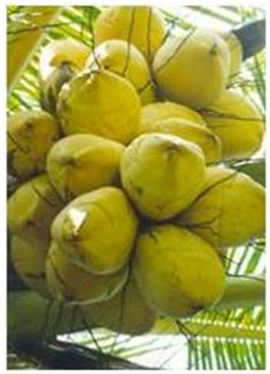
• The color of the coconut husk is orange and the middle rib of the coconut branch is also orange.
• The market value is for coconut water (orange water).
• Oil content of the kernel is high as about 69.%.
4.Ran Thembili
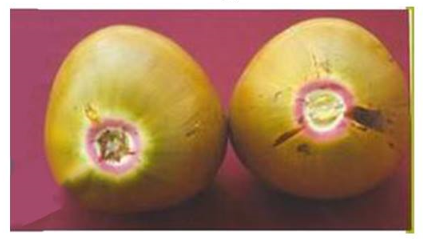
• Has a green coconut husk. But nowadays the coconut husk can be seen in golden-orange colour due to cross-pollination.
• The inside of an immature fruit turns pink.
• Has a very high medicinal value.
5.Pora pol

• Coconut shell is a denser and smaller coconut than other varieties.
• Contains more oil but less market value.
• Used for traditional Porapol sport.
6.Bodiri

• This plant which bears a large number of fruits is popular in the Southern Province.
• Some Bunch of coconuts has a fruit size as high as 50 coconuts and the size of the fruit is smaller compared to other varieties.
• Oil content is high at about 69.6%.
7.Kamandala
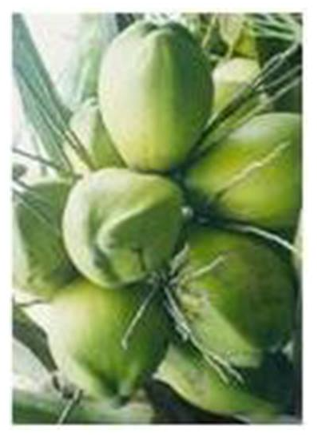
• This variety, with its relatively large size, is very similar to the Sanraman coconut in the Philippines.
• The number of coconuts produced in a bunch of coconuts is relatively small.
• This plant is also popular in the Southern Province.
8.Dikiri Pol
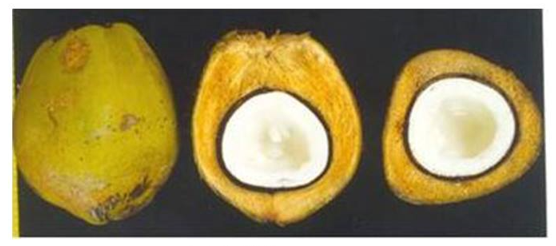
• This type of coconut has a jelly-like component instead of kernel and coconut water and has a very delicate taste.
• Generally some of the nuts in one bunch of coconuts are like this and the rest of the nuts become normal coconut.
• Coconut seedlings that have become dikiripol do not sprout and there is a possibility of obtaining dikiripol seedlings by nursing other fruits of the same type.
Nana
• Also known as short coconut verity.
• Growing up to 10.5 m tall, with a weak stem.
• No spherical growth at the base of the stem (Not formation of rootball).
• Fronds grow to about 13 feet in length.
• Coconut flowers take about 3-4 years to form. (It is generally believed that the coconut blossom comes after 38 coconut branches).
• The male and female flowers of this type of coconut flower get activated at the same time. Therefore, self-pollination takes place.
• The average number of fruits per tree per year is more than 90-100.
• Coconut kernel (apricot) is thinner than the fruits of taller varieties and has less copra composition.
• Successful productivity is about 40 years and it is susceptible to dry climates, poor soil nutrients, diseases and pests.
• Cultivates in a restricted environment and produces seeds.
Subtypes of Nana coconut
1.Green Kundira
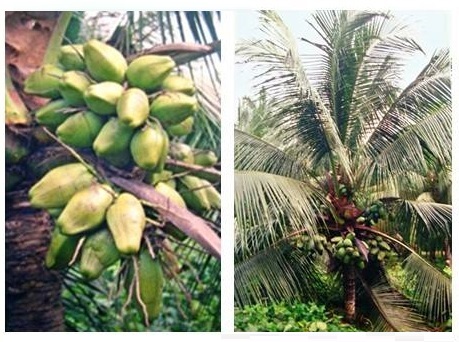
• It has a green coconut husk and the frond is also green.
2.Yellow Kundira
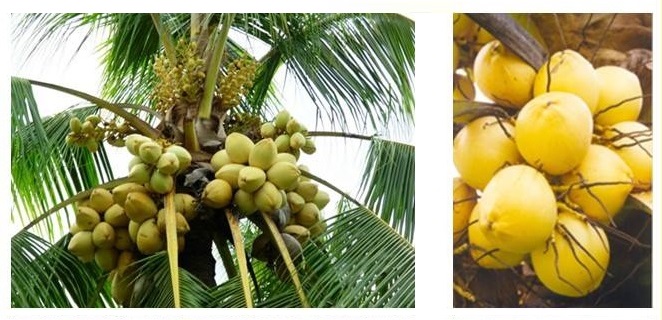
• It has a yellow coconut husk and the frond is also yellow.
3.Red Kundira
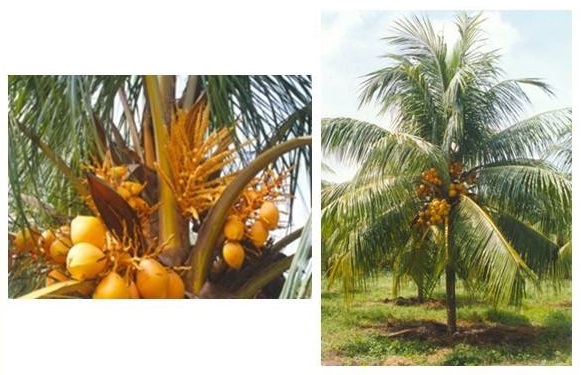
• It has a red coconut husk and the frond is also red.
4.Brown Kundira
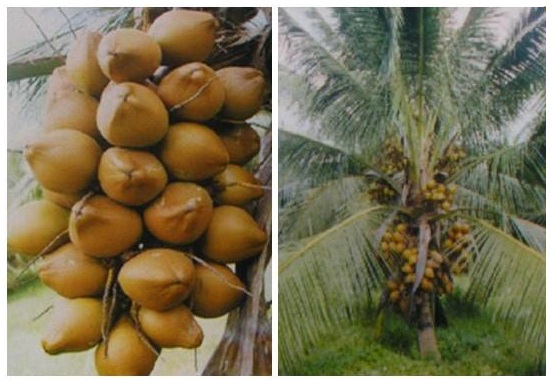
• It has a brown coconut husk and the frond is also brown.
Arantiaca
• This is an intermediate type between the above two types (tall and short type).
• The tree grows to a height of about 12 m and is a medium sized trunk plant.
• Frond grows to about 14 feet in length.
• Coconut flowers take about 5-6 years to form.
• Male and female flowers of this genus are active at the same time. Therefore, self-pollination takes place.
• The average number of coconuts per tree per year is more than 90-100.
• Successful product life is about 40 years and is susceptible to dry climates, fungal infections, diseases and pests.
Subtypes of Arantiaca coconut
1.King-Coconut
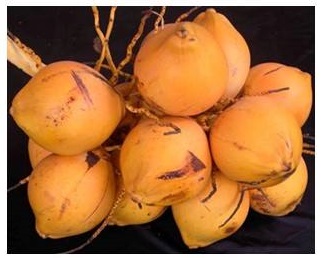
• Coconut husk is orange in color and has high coconut water content.
• Oils has medicinal value
3.Navasi Thembili
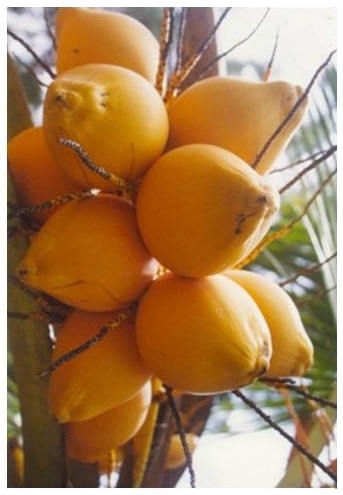
• Coconut husk turns orange and has other characteristics similar to “Navasi”.
3.Rath Ran Thembili/ Rath Gon Thembili
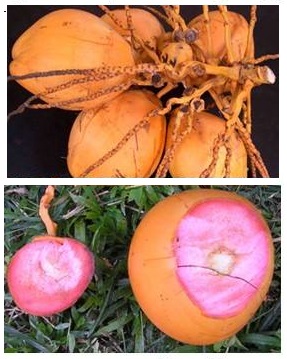
• Coconut husk turns reddish-orange and pink when cut near the stalk.
• Has a medicinal value.
4.Bothal Thembili

• This type of fruit (coconut) takes the shape of a bottle.
(G.K. , S.A.C.N., P.N., & J.M.D.T, 2010)
References:
D.V., L., M.R.T. , W., & C., J. (1988). COCONUT VARIETIES IN SRI LANKA. Coconut Breeding in Sri Lanka, 1-20.
G.K. , E., S.A.C.N., P., P.N., D., & J.M.D.T, E. (2010). Grouping the new phenotypes under coconut varieties. Varietal Classification of New Coconut (Cocos nucifera L.) Forms Identified, 43-49.


Leave a Reply